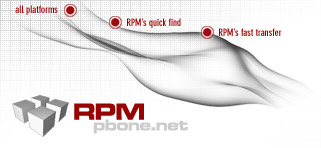| Name : perl-Pod-Pdf
| |
| Version : 1.2
| Vendor : obs://build_opensuse_org/devel:languages:perl
|
| Release : 1.63
| Date : 2024-08-05 18:01:05
|
| Group : Development/Libraries/Perl
| Source RPM : perl-Pod-Pdf-1.2-1.63.src.rpm
|
| Size : 0.08 MB
| |
| Packager : (none)
| |
| Summary : POD to PDF translator
|
Description :
\'pod2pdf\' translates single \'POD\' (Perl Plain Old Documentation) files and
translates them to \'PDF\' (Adobe Portable Document Format) files. Future
extensions to this program may permit translation of multiple \'POD\' files
into a single book. At this stage the emphasis is on simplicity and ease of
use. The output \'PDF\' file takes the name of the input file with the suffix
\'.pdf\'.
\'PDF Outlines\' are created at three levels corresponding to \'=head1\',
\'=head2\' and \'=item\'. The \'outline\' headings are reproduced as a \'Table of
Contents\' page. Long \'=item\' strings are curtailed to a length which will
fit reasonably in the space available on the page. When the \'PDF\' document
is viewed on screen, the \'outlines\' (sometimes known as \'Bookmarks\')
provide links to the appropriate page. When the document is printed the
\'ToC\' provides the same facility.
Links of the form xyz.pm and links to named destinations are not
implemented since it is rarely possible to resolve the link except in the
limited instance of links to named destinations in the document itself.
Links to \'URL\' addresses (including _http_, _ftp_ and _mailto_) are active
however and call the resident default browser. How that responds to the
call will depend to some extent on the type of browser and the environment
in which it finds itself.
The \'POD\' specification \'perlpod.pod\' allows blocks of text to be enclosed
by \'=begin\' and \'=end\' markers. The block-type my be indicated by a string
after \'=begin\' (for example \'=begin html\' would indicate an \'HTML\' block)
of which _roff, man, latex, tex and html_ are recognised entities.
Specification \'perlpod.pod\' goes on to say that _\"A formatter that can
utilize that format will use the section, otherwise it will be completely
ignored.\"_ This seems to defeat the object of the documentation since quite
different output might be expected according to which translator was used.
It is doubtful if that would necessarily be the author\'s intention.
This translator, \'Pdf.pm\', in all cases reproduces the section enclosed by
a \'=begin/=end\' pair (or any paragraph following \'=for\' which is similarly
defined in \'perlpod.pod\') but in a special color so as to give a visual
warning to the reader that special meaning might attach to the block of
text.
The primary objective is to produce a translation of a \'POD\' file of good
typographical quality which can be printed on any printer (particularly
low-cost non-PostScript ink-jet printers) in any environment. In this
connection it must be recognised that some authors use \'POD\' mark-up more
intelligently and to better effect than others. Not infrequently mistakes
in formatting (frequently the absence of a blank line to end a block)
result in files which do not translate properly on some or all translators.
\'PDF\' files provide the very useful ability to quickly screen the
translation for visual checking before the file is despatched to the
printer.
|
RPM found in directory: /packages/linux-pbone/ftp5.gwdg.de/pub/opensuse/repositories/devel:/languages:/perl:/CPAN-P/openSUSE_Tumbleweed/noarch |
